First Drive: Is the Peugeot e-208 what all electric cars should be like?
The e-208 isn’t massively powerful – unlike lots of other electric vehicles – but does this play in its favour? Jack Evans finds out.

What is it?
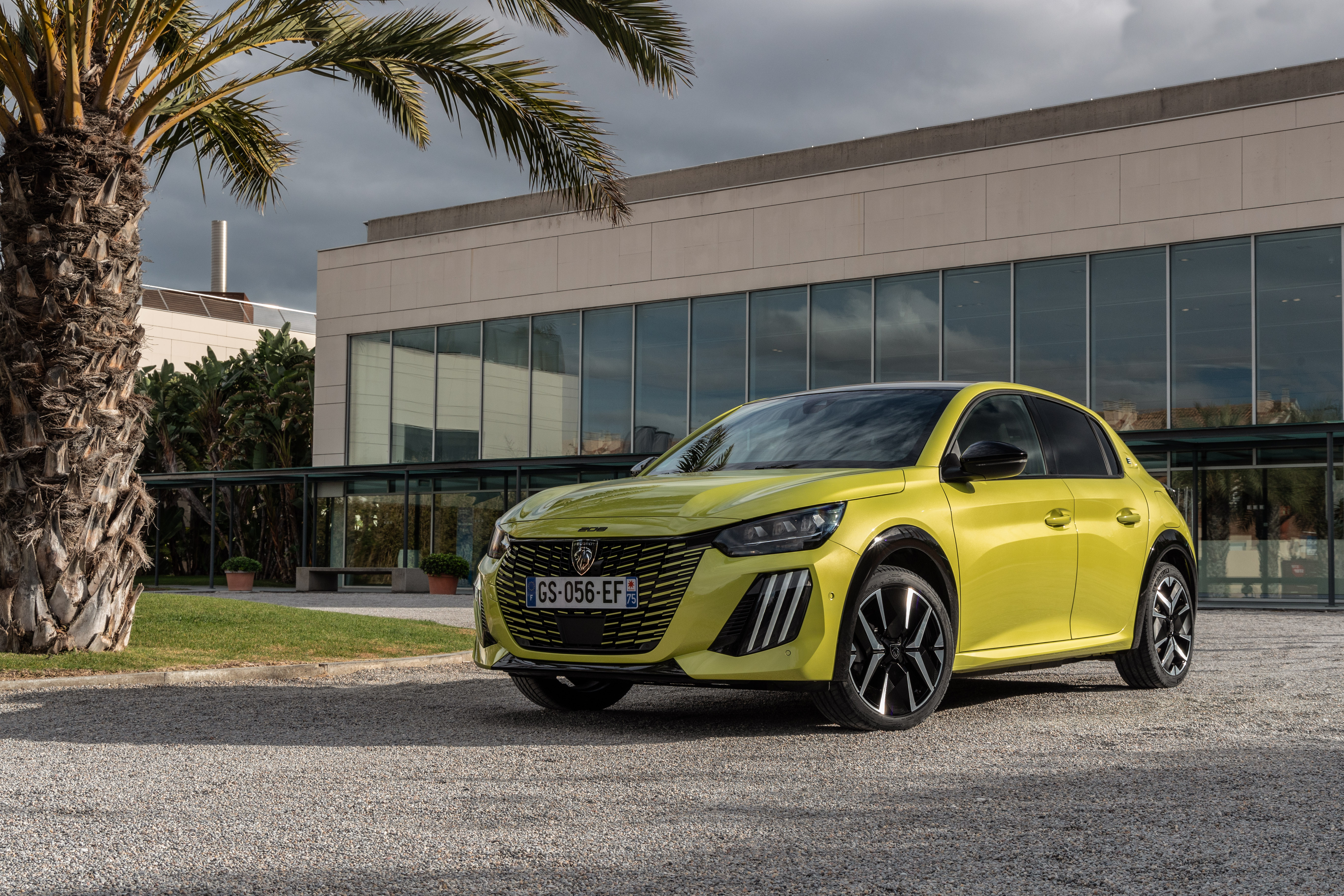
Peugeot now has one of the most electrified fleets around. It kickstarted this process a few years ago and, because of its early adoption, you can now get pretty much every car in its range with some form of electrification. We’ve always liked the e-208 – Peugeot’s smallest EV – for its no-nonsense approach and fun handling, but now the French firm has seen fit to update it in many crucial areas.
But with the compact electric segment now populated by all kinds of options, can the e-208 still do what it takes to stand out? We’ve been finding for ourselves.
What’s new?

Put the e-208 against its predecessor and the changes aren’t immediately noticeable. The exterior design has been sharpened up with a new lighting signature featuring Peugeot’s ‘three-claw’ design, while two new colours – Selenium Grey and Agueda Yellow (pictured) – have been added to the e-208’s list of available palettes. The latter is particularly striking, but not for shrinking violets, that’s for sure.
Inside, the 10-inch display which was once only standard on high-spec cars is fitted as standard, while a multitude of changes underneath have been introduced to make the e-208 more efficient than before – but more on that shortly.
What’s under the bonnet?
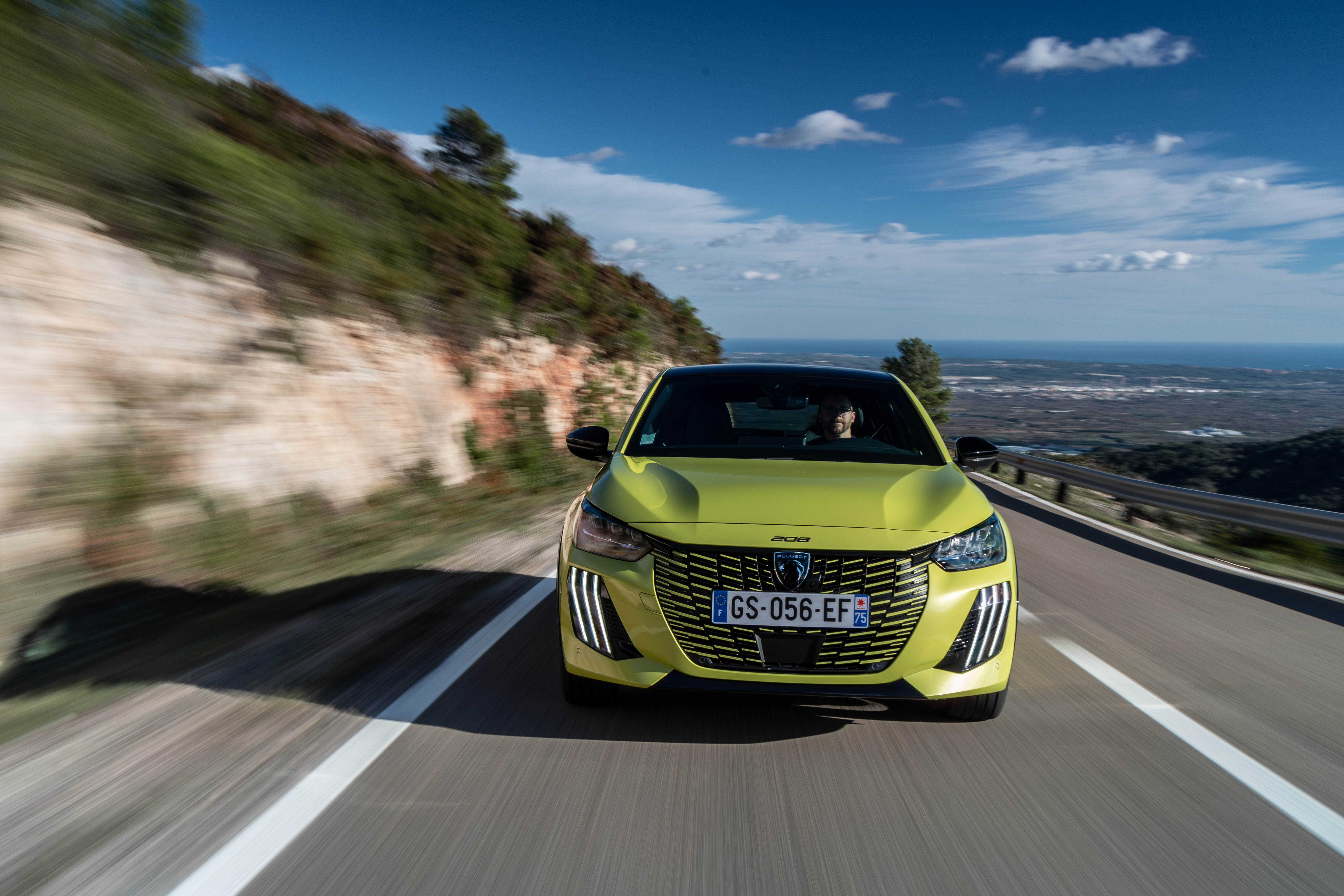
There’s a lot going on underneath the new e-208. There are now two flavours of battery to choose from. The entry-level 50kWh version is the same as you’d find on the old e-208, while a slightly larger 51kWh battery brings a range of up to 248 miles over the 225 miles in the standard version.
You get a more powerful motor, too, deploying 154bhp instead of 134bhp. Sure, they’re not overwhelmingly different figures but in the EV game every extra mile of range helps, so it’ll come as a welcome edit to many. Charging to full from empty will take seven-and-a-half hours via a conventional 7kW home wallbox, or just 30 minutes if you hook up to a 100kW charger. Because of the e-208’s relatively modest-sized battery, you don’t have to wait around for as long when charging.
What’s it like to drive?
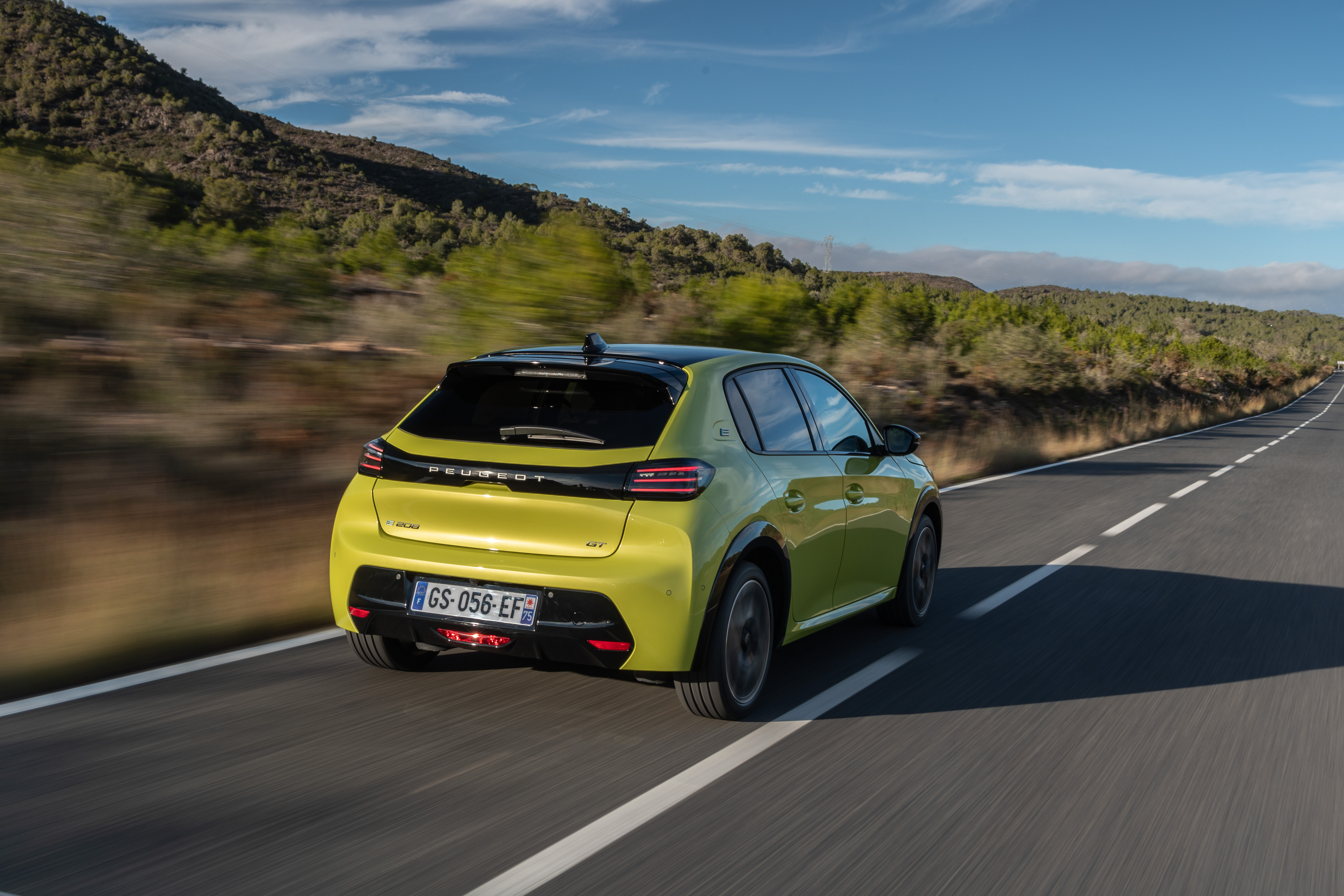
The e-208 isn’t overburdened with power and boy, is it a breath of fresh air. We’ve become used to electric vehicles bringing big power outputs and quite a bit of weight, but the e-208 is a pleasant antidote to this. It feels light, agile and surprisingly comfortable while the zip away from the line is more than enough to keep things interesting. The steering is pretty light, too, but this really helps around town.
There aren’t any quirky noises to accompany the e-208’s acceleration, either, so it all feels pleasantly normal. Visibility is good while the e-208’s compact size means you feel like you’ve got more space within a lane which isn’t a bad thing. The e-208 eagerly threads through corners and can turn a twisty lane into quite a lot of fun. We think there’s definitely scope for a GTI version, that’s for sure.
How does it look?
As we’ve touched upon, Peugeot has made a series of tweaks to the e-208’s design but this is far from a clear-slate redesign. That’s not a bad thing, however, as we always found the look of the e-208 quite appealing, with this compact model’s curvy proportions blending together some of the appearance of classic Peugeot hatches with more modern touches.
How to tell the electric 208 apart from its petrol-powered stablemates? One of the biggest points of separation is the special ‘E’ badging on the C-pillar which is a nice nod towards the electric powertrain. Eye-catching LED headlights now come as standard on all 208 models, adding a more eye-catching ‘face’ to this Peugeot.
What’s it like inside?
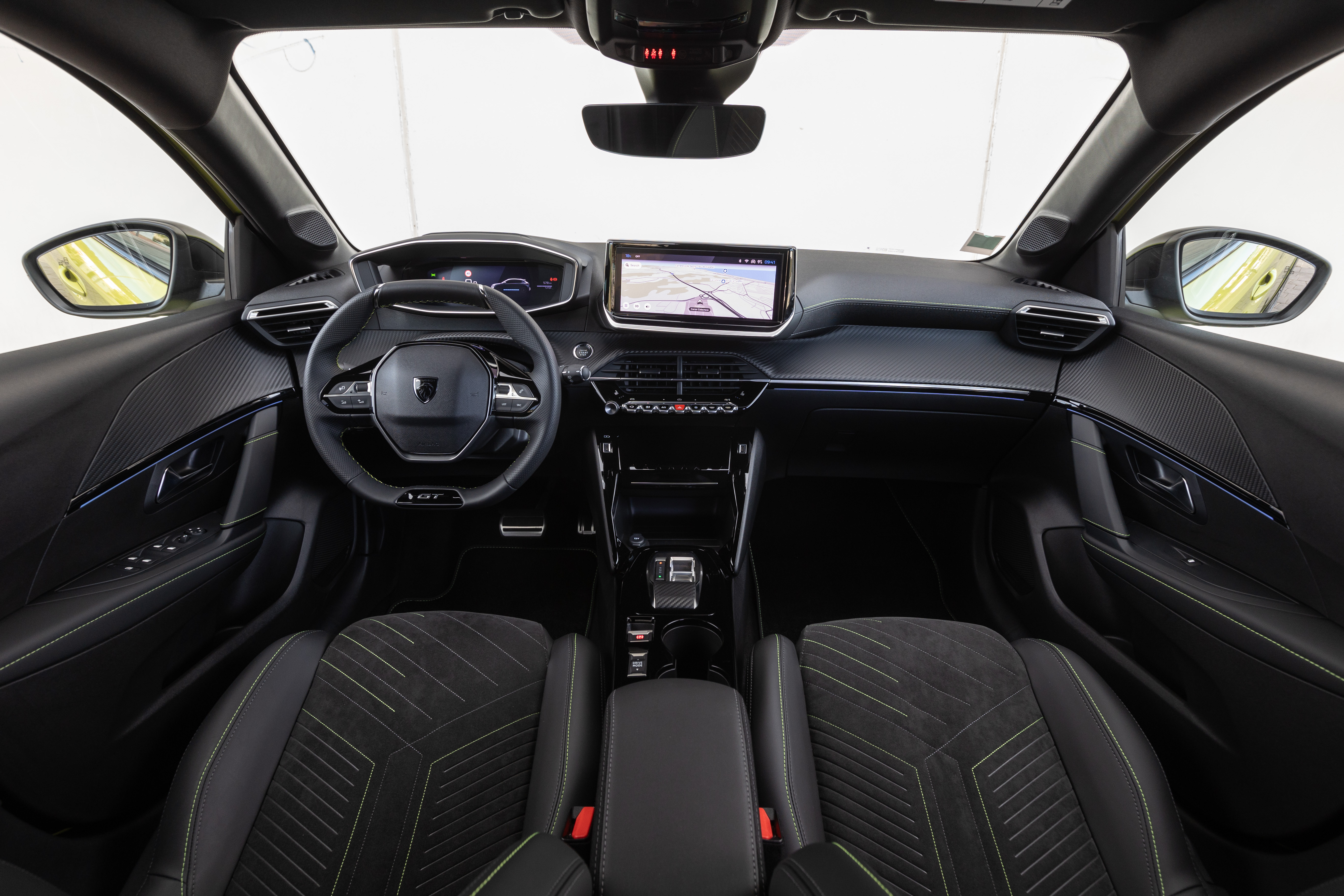
Peugeot has made a real surge into more premium territories over recent years, pushing upmarket by adding more high-quality materials to the cabins of its cars while throwing extra equipment at them. You can see this aspiration in the e-208; there are loads of great materials used throughout while the general fit-and-finish isn’t bad either.
Space-wise, things are bang on average. This isn’t a large car, of course, so it’ll come as no surprise that the room at the back of the car isn’t the most plentiful. Headroom will be tight for taller occupants, that’s for sure. The e-208 also sits atop a platform which was always designed to feature electric powertrains, which is why there’s still plenty of boot space in this relatively compact car. There are 309 litres of boot space available, rising to 1,118 litres if you fold down the rear seats.
What’s the spec like?
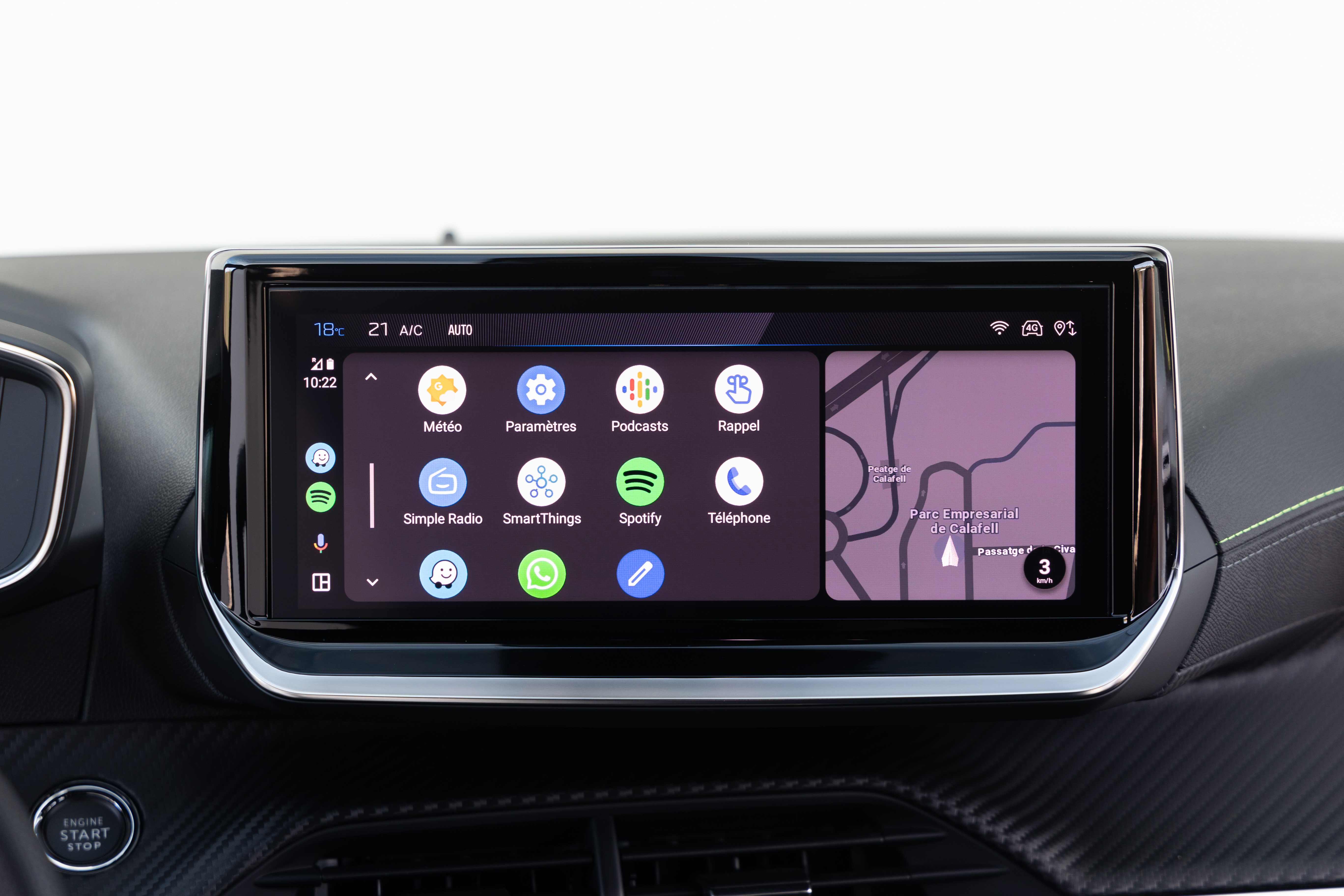
Prices for the e-208 kick off from £31,200, rising to £32,400 for the larger-battery version which we’d recommend. In entry-level Active trim, you’re getting plenty of equipment for the money, such as a leather-trimmed steering wheel and climate control. Plus, all versions get parking sensors and Peugeot’s i-Cockpit system, which includes a digital instrument panel and a super-small steering wheel which can be tricky to adjust into the right position in order to not block out the key information ahead of you.
At the top of the tree lies GT specification, bringing 17-inch diamond-cut alloy wheels, plenty of gloss black detailing and aluminium pedals. However, even those entry-level specifications bring more than enough equipment.
Verdict
The e-208 feels like the ideal everyday electric vehicle. It’s got more than enough range for most journeys while a rapid charging speed will no doubt help when you need to top-up mid-way through a journey.
We like the e-208’s unflustered nature which will ensure it would slide into take the place of a conventional petrol or diesel car with ease. Throw in some excellent standard equipment and you’ve got a very compelling package.





